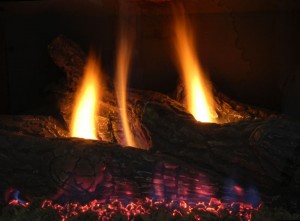Fireplaces can be confusing, especially for the average homeowner. With modern styles that burn fuel other than wood and function with very high efficiency, a lot of questions come up. The following list answers a few common questions regarding gas fireplaces. If you do not see your question answered here, get in touch with Blue Sky Chimney Sweeps to speak with an expert.
Do I need to have my gas fireplace serviced?
Gas fireplaces should be serviced every year just like any other type of fireplace or stove. While gas fireplaces do not require the same type of maintenance as a wood burning unit, they still need regular care. For example, dirt, dust and even spiders can clog up the ports in the gas line, which can cause the fireplace to work improperly and stop working entirely. In addition, gaskets and seals in the fireplace dry out and crack over time, and leaving them damaged can allow carbon monoxide to leak into the house. To avoid these issues and correct any that form, an expert should service your gas fireplace every year.
Should the flue be open when I use my gas fireplace?
Some gas fireplaces require venting, while others do not. Traditional gas fireplaces must be operated with the flue open to allow the harmful products, like carbon monoxide to escape the living space. On the other hand, vent free gas fireplaces with specially designed gas logs only need the flue open for the initial curing period. After that, the unit can operate without ventilation.
Can I get new logs for my gas fireplace?
Gas logs and fireplaces are generally designed to operate as a unit, so manufacturers discourage mixing logs and fireplaces that were not designed for one another. For example, burning traditional gas logs in a vent free fireplace can produce lethal amounts of carbon monoxide in the house. If you need new logs for your gas fireplace, contact the manufacturer to order the proper replacement set.
My walls and ceilings are wet and my masonry chimney is cracking. Is my gas fireplace causing this?
Symptoms like water stains, moist walls, bubbling wallpaper, eroding mortar, and loose bricks all point to an improperly installed gas fireplace insert. Modern inserts often burn very efficiently, and in order to do this, they take some of the heat that goes up the chimney with other fireplaces and transfer it to the home instead. The problem with this happens when the chimney is cooler than it used to be. These lower temperatures cause the flue gases to condense on the walls of the chimney instead of flowing out the chimney in their gaseous form. This liquid, mostly comprised of condensed water vapor, has an acidic pH, which starts to disintegrate the chimney and liner. The excess moisture in the chimney causes water stains and wetness, and the acidic nature of the water degrades the masonry. In this case, the insert was likely installed without a properly fitted flue liner. A chimney specialist can determine the size of the flue liner necessary for proper functioning and can install it correctly.
Blue Sky Chimney Sweeps has trained experts to help answer any and all of your gas fireplace or chimney questions!

